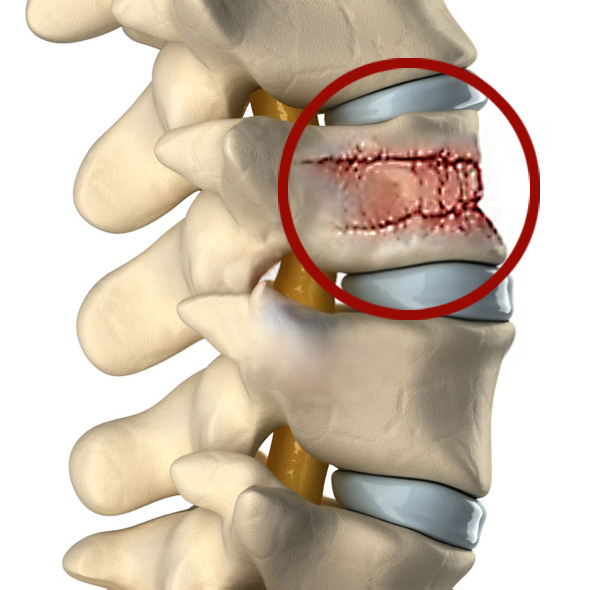
Vertebral fracture and osteoporotic destruction
Vertebral fractures – Osteoporosis
Vertebral fractures can have various causes
- Osteoporosis
- Trauma
- Accident
- Tumour
Osteoporotic vertebral fracture
Osteoporosis describes a reduction of the bone matter and simultaneous deterioration of bone quality. This bone loss can affect the entire human skeleton. In women, this natural degeneration is dramatically accelerated by the hormonal changes during the menopause. Almost 30% of all postmenopausal women have to deal with the issue of osteoporosis.
Combined with insufficient physical activity and an unbalanced diet, this can even form the basis for the future development of advanced osteoporosis. Bone degeneration is more severe and the bone structure is reduced, leading to a gradual loss of bone density.
The demineralisation of the spine reduces the stability and elasticity of the bone in the vertebral bodies. In severe cases, vertebral fractures or other fractures of the skeletal system can be caused by low or simply everyday strain. Falls and bruises instantly forgotten by healthy people can lead to fractures in osteoporosis patients. Simply tripping on a step can cause a vertebral fracture from the impact. This significantly restricts the patient’s quality of life.
This is treated with medication which slows bone resorption (bisphosphonates), additional doses of vitamin D and calcium to support bone formation, as well as painkillers. Sometimes hormone replacements are necessary for women. At the same time intensive, continuous physiotherapy is required.
Surgical stabilisation of an osteoporotic vertebral fracture may be necessary if a vertebrae threatens to collapse or has already slipped. This can be diagnosed with magnetic resonance imaging (MRI) or X-ray computer tomography (CT). A proven minimally invasive method is vertebroplasty or kyphoplasty. Bone cement is injected into the vertebra through a vertebral puncture. Vertebral stents are also available, which may be inserted through the puncture needle to straighten any new vertebral fractures. This is a considerable advantage as the spine axis can be brought back to its correct position.
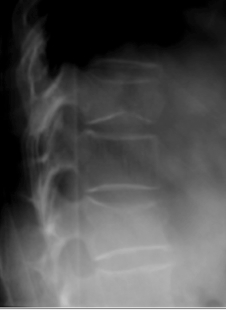
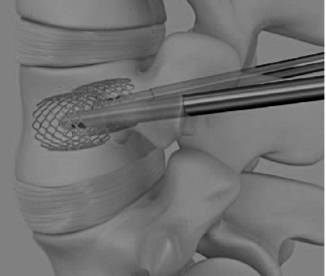
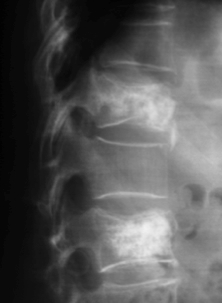
Osteoporotic fractures of two lumbar vertebrae. Straightening and strengthening of the vertebrae with stents and bone cement.
Traumatic vertebral fracture
A vertebral fracture caused by an accident is treated differently depending on its stage.
A differentiation is made between
- Stable fractures
- Unstable fractures
Stable vertebral fractures can be treated conservatively with physical therapy and possibly with a temporary corset.
Unstable fractures are usually treated surgically. The broken vertebra is either reconstructed with autologous bone or has to be replaced with a titanium cage. In both cases the objective is to restore the function of the spine and achieve pain-free resilience to strain, as anatomically as possible.
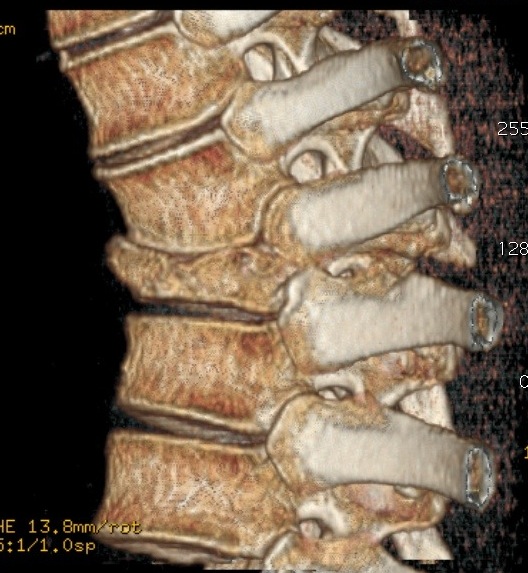
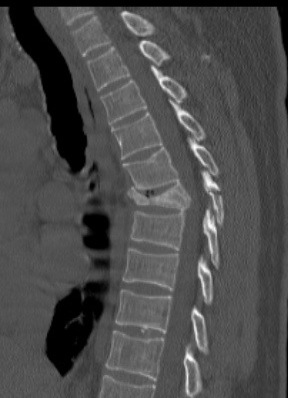
Comminuted fracture of the sixth thoracic vertebra, the CT right clearly shows a visible narrowing of the spinal canal
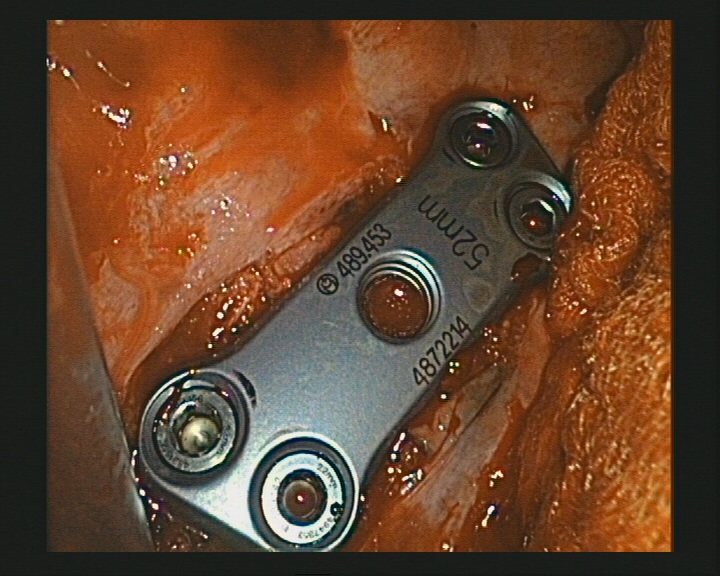
Intra-operative image: The thoracic vertebrae fracture is stabilised with a titanium plate in the chest
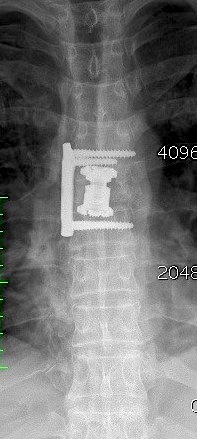
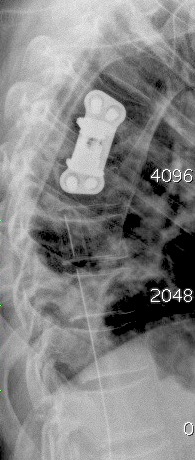
Post-operative radiographs: The smashed sixth thoracic vertebrae is replaced by a titanium vertebrae. The titanium plate stabilises the fracture from the 4th to the 6th thoracic vertebra.
Tumour metastasis
Through metastasis, a tumour can also trigger destruction of vertebral bone. This can lead to a dangerous narrowing of the spinal canal, which compress the spinal cord and can cause paralysis. In this case, as long as the patient’s general health allows it, rapid decompressive surgery is necessary and - if possible - stabiliation. The surgery method is very similar to that used with traumatic vertebral fractures. The destroyed vertebrae often has to be replaced by a titanium vertebra.
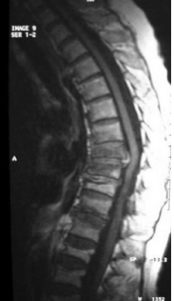
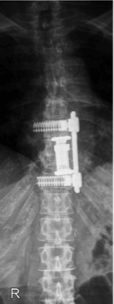
Bone metastases of the 9th and 10th thoracic vertebra. Vertebral replacement with a titanium vertebra and titanium plate.
